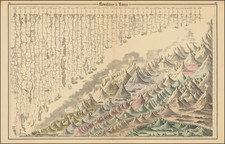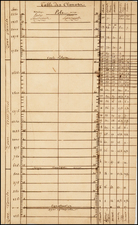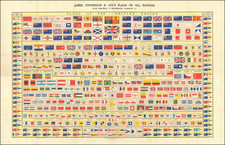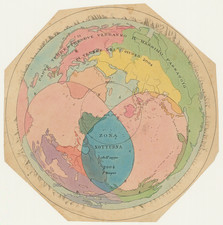Rare old color flag chart, published by Homann.
The chart illustrates 139 flags of various nations, factions, and trading companies, including the flags of China (bottom center) Dutch West India Company (Geoctroyeerde Westindische Compagnie) and the Dutch East India Company (V.O.C), two Chinese flags and two Tartar flags.
At bottom center the flag of Empire of China appears as a great whirlpool surrounded by eight decorations. This is most likely based upon an image of the Chinese flag appearing in Carl Allard's, 1705 Dutch flag book, Niewe Hollandse Scheeps Bouw. In fact, it is a misinterpretation of the Qing flag, a dragon on a yellow field with eight banners. However, European mapmakers, likely having never seen a Chinese flag, interpreted the dragon to the best of their ability.
Johann Baptist Homann (1663-1724) was a mapmaker who founded the famous Homann Heirs publishing company. He lived his entire life in Bavaria, particularly in Nuremberg. Initially, Johann trained to become a priest before converting to Protestantism and working as a notary.
In 1702, Johann founded a publishing house that specialized in engravings. The firm flourished, becoming the leading map publisher in Germany and an important entity in the European map market. In 1715, Johann was named Imperial Geographer to the Holy Roman Empire by Charles VI and made a member of the Prussian Academy of Sciences. Most importantly for his business, his reputation and contacts gained him imperial printing privileges which protected his publications and recommended him to customers. Johann is best known for this Grosser Atlas ueber die ganze Welt, or the Grand Atlas of the World, published in 1716.
After Johann died in 1724, the business passed to his son, Christoph (1703-1730). Upon Christoph’s early death, the company passed to subsequent heirs, with the name of the company changing to Homann Erben, or Homann Heirs. The firm continued in business until 1848.












![Plan eines Regulairen Laagers [Plan of a Regular Camp]](https://storage.googleapis.com/raremaps/img/small/93734.jpg)

